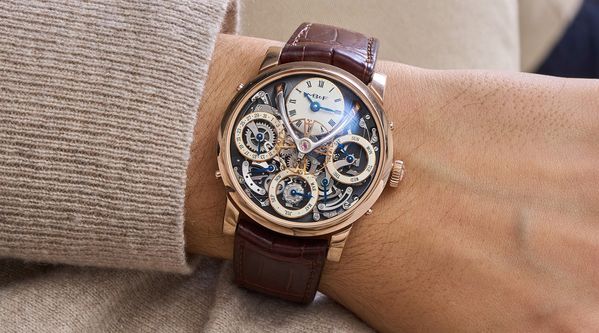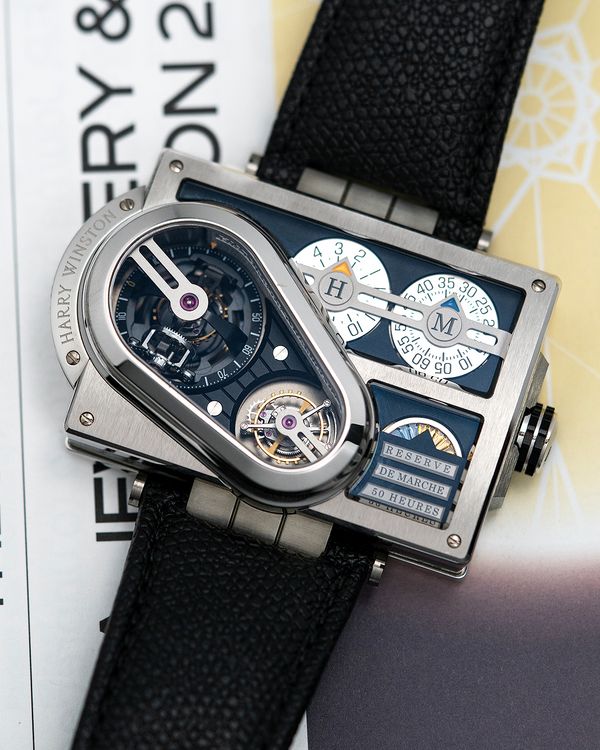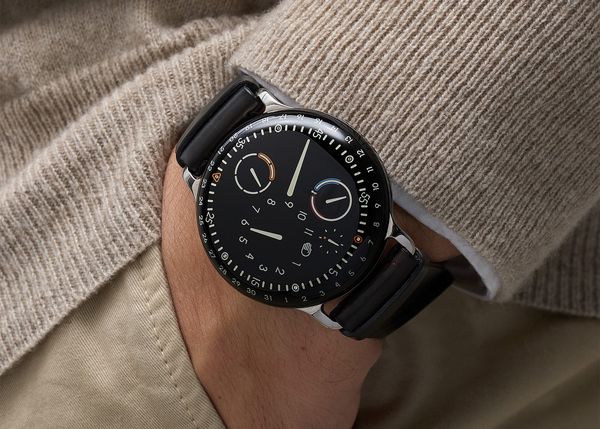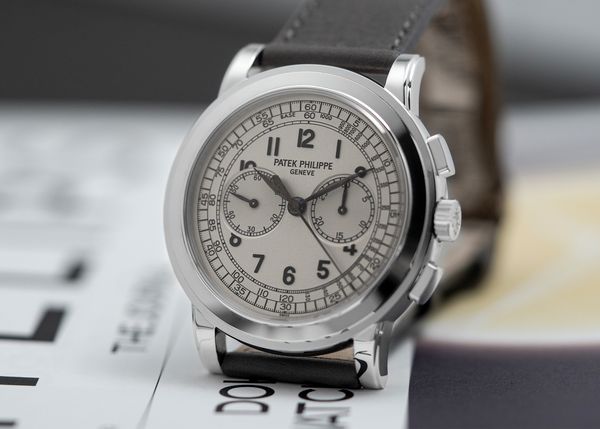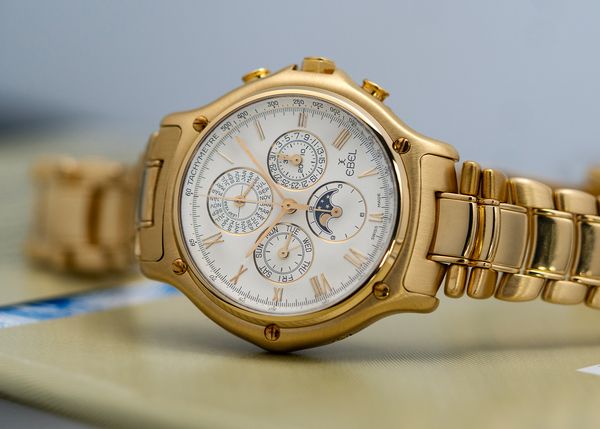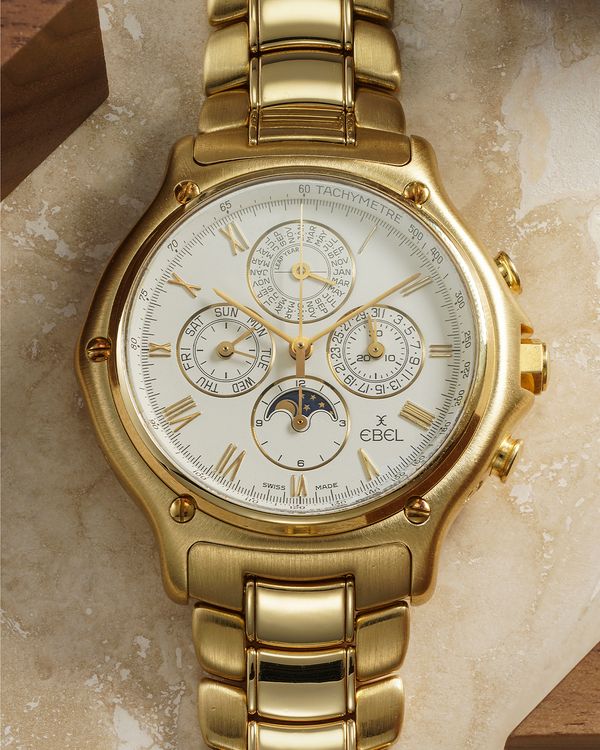Phillips in Association with Bacs & Russo is excited to announce The Geneva Sessions, Spring 2024, online auction, taking place from 12:00 PM CET, Tuesday, March 5, to 2:00 PM CET, Tuesday, March 12. Featuring more than 80 different high-end luxury wristwatches, the sale covers everything from A. Lange & Söhne and F.P. Journe to Audemars Piguet and Patek Philippe. It also includes all the watches featured in this story.
Our first auction of 2024 is packed with interesting and underrated watches from a wide range of brands.
There's a natural focus on independent watchmaking, including multiple early MB&F Horological Machines, as well as a number of interesting and rare non-wristwatch horological objects that you might have never seen before.
As our Geneva-based team worked on sorting through the 83 total lots included in the sale, we naturally developed a few favorites.
These are those watches – the six lots that our team of specialists and writers couldn't get out of their heads after studying them for weeks and weeks in preparation for the sale.
Lot 31: A Circa 2014 Harry Winston Histoire de Tourbillon 3 In 18k White Gold
Alexandre Ghotbi, Head Of Watches, Continental Europe And EME
Estimate: CHF 80,000 - 120,000
I followed the story of the Histoire de Tourbillon 3 very closely when it was launched hot on the tails of the Opus projects that shed light on some of the greatest independent makers of our time.
Harry Winston teamed up with the master of tourbillons at Greubel Forsey's CompliTime for the Histoire de Tourbillon series, with the stated goal of pushing the boundaries of watchmaking to the extreme.
The present watch is a truly maximalist creation. It exists solely for the sake of creating a timepiece that celebrates creative audacity, design panache, traditional horology, and of course: the tourbillon.
Lot 9: A Circa 2016 Ressence Type 3 In Titanium
Tiffany To, Head Of Sale, Senior International Specialist
Estimate: CHF 8,000 - 12,000
I am very much drawn to the ethos and designs of Ressence.
Since its 2010 birth at the hands of industrial designer Benoît Mintiens, Ressence has continuously surprised collectors with its novel time-telling indication; in a way, the brand has modified our perception of the way time should be read.
The Type 3 series, like the present example, ups the ante for Ressence with a new dial format that is filled with synthetic oil to do away with any refraction of light. The resulting aesthetic gives the impression that the hands are floating in mid-air!
Completely novel, the Ressence Type 3 is an outstanding and whimsical piece of horological ingenuity.
Lot 30: A 2015 Patek Philippe Split Seconds Chronograph Perpetual Calendar Ref. 5951P-001 In Platinum With Black Dial And Red Accents
Marcello de Marco, Specialist, Business Development Associate
Estimate: CHF 180,000 - 360,000
The reference 5951 is one of my favourite contemporary Patek Philippe models for a number of reasons.
First and foremost, at the time of its inception in 2010, it was the very first time Patek Philippe dared to “break protocol” and dress a super complication with an audacious post-modernist dial – not to mention the 1920s inspired cushion case!
The trend today is well established as a successful effort to make the brand more in tune with the younger generations of collectors. In Patek's current catalog one can find a lacquered green dial ref. 5270, a left-handed (!) perpetual split-seconds chronograph (with a dial configuration highly reminiscent of the ref. 5951), and the split-seconds ref. 5204 with its bold military green dial.
However, just over a decade ago, super complicated (and complicated, in general) Patek Philippe timepieces would rigorously feature silvered or black dial, the idea of colors blemishing the aulic perfection and elegance of a Patek Philippe grand complication was at the time considered close to blasphemy.
The ref. 5951 was the first model to break this taboo.
Mechanically, it is simply a masterpiece. Not only does it feature a split-seconds chronograph movement inherited from the ref. 5959 and 5950 (at the time the thinnest split-seconds chronograph calibre ever), but the way Patek managed to compress the perpetual calendar module into the lower part of the movement while nonetheless offering a clear, symmetric, and legible date display is nothing short of miraculous.
Finally – and this purely subjective – I find wearing it on the wrist to be a sublime experience. The vintage-style case is in perfect juxtaposition with the modern dial. The black dial with red details grants the watch a sporty vibe but still manages to keep unmarred the watch's overall elegance. The white counters and date track offer a high degree of legibility, boosting the casual elegance of the piece. Even the strap is peculiar, black with red stitching, amplifying the sportiness of the model perfectly.
A special mention goes to the rarity of the piece: In production for only 3 years, the output is estimated to be in the orders of a few dozen pieces, not only because of the movement's intrinsic slow production pace but also because of its original lukewarm reception, an attribute that is so common with future grails (one example above all being the vintage Patek World Time ref. 2523), meaning that the demand, and consequently the production, were even more restricted than the already very low output of a grand complication wristwatch from Patek Philippe.
Lot 81: A 2008 Patek Philippe Chronograph Ref. 5070G In 18k White Gold
Clara Kessi, Client Relations Manager
Estimate: CHF 35,000 - 70,000
Interestingly, the Patek Philippe Chronograph ref. 5070 has never been at the top of my list until today. I believe it is the kind of watch you learn to appreciate once you’ve sharpened your eye on some of the landmarks of Patek Philippe collecting, such as the references 1518, 2499, 1463, 1579, 3448, 3970, and 5004 – the list can continue indefinitely.
Launched in 1998, the reference 5070 was a bold move by Patek Philippe.
It was the Geneva firm's first chronograph without a calendar function since the iconic “Tasti Tondi,” reference 1463, which was discontinued in the 1960s, an almost 30-year gap. This long interlude allowed Patek Philippe to produce, in my humble opinion, one of its best chronograph wristwatches.
The ref. 5070 is large, featuring a 42mm diameter case, making it the largest chronograph in serial production by Patek Philippe at the time. Although it's perhaps too big for my tiny wrist, the ref. 5070 exudes so much flair and style that I’ve fallen completely under its charm.
The case profile reveals curves and additional presence through the repetition of concentric circles – found in the stepped case profile, the railway 60-minute track, the inner tachymeter graduation, and the symmetrical twin recessed chronograph sub-dials. And yet, the ref. 5070 also boasts angles through the downturned lugs, the polished finish of the multi-stepped bezel, and the rectangular pushers. Drawing direct inspiration from the extra-large unique split-second chronograph ref. 2512, and the first-series ref. 2499, the ref. 5070 incorporates the perfect vintage design elements to breathe fresh air into the brand's iconic lineage of chronograph wristwatches.
Another appealing feature is the dial. It might surprise you to learn (or not) how many collectors end up opting for their smartphone to tell the time over glancing at their incredibly rare, uber cool wristwatch. The reason? They struggle to read the time. Perhaps you're one of them? Then the present ref. 5070 is for you. Despite its seemingly monochromatic appearance, the applied blackened 18k white gold Arabic numeral hour markers, feuille hands, and central chronograph seconds hand allow for exceptional legibility against the matte silver dial
In my mind, if the ref. 5070 was a drink, it would be a whiskey sour. A classic cocktail, offering gravitas with the smokiness and age of the whiskey, a rich and silky texture from the whipped egg white, and a touch of tang with the lemon juice.
What beats inside the ref. 5070 is also nothing short of remarkable.
The movement powering the ref. 5070, the caliber 27-70, is based on the ébauche Lemania caliber 2310, significantly modified by Patek Philippe. Often referred to as the most beautiful, historically significant, and even the greatest chronograph movement of all time, the Lemania 2310 was famously used by some of the biggest names in horology.
In its current form as the caliber 27-70, it features a heavily modified escapement and exceptional hand-finishing by Patek Philippe in its typical style, stamped with the prestigious Geneva Seal. This marvel of intricacy can be admired through the see-through caseback, a rare opportunity, as many beautiful movements are too often hidden behind solid casebacks.
Lastly, one must add that the ref. 5070 is significant for being the final chronograph reference at Patek Philippe to rely on an outsourced movement, rendering the present example in 18k white gold a rare opportunity to acquire a piece of true horological history.
Lot 4: A 2016 MB&F Legacy Machine Perpetual Calendar In 18k Pink Gold
Arthur Touchot, International Head Of Digital Strategy, Specialist
Estimate: CHF 60,000 - 120,000
The MB&F Legacy Machine is one of the most original, technically impressive, and beautiful perpetual calendar wristwatches of the 21st century.
The present first-generation version cased in 18k pink gold (one of only 25 pieces in the metal) embraces a more classic aesthetic compared to its successors.
Developed in collaboration with the brilliant Irish watchmaker Stephen McDonnell, the Legacy Machine Perpetual was recognized as the Best Calendar watch of the year by the Grand Prix d'Horlogerie de Genève (GPHG) in 2016, further cementing its position as one of the most desirable perpetual calendars out there.
Lot 11: A Circa 1985 Ebel Perpetual Calendar Chronograph In 18k Yellow Gold
Logan Baker, Senior Editorial Manager
Estimate: CHF 10,000 - 20,000
It’s frequently forgotten that Ebel was once one of the most important Swiss watchmakers.
Pierre Alain-Blum, the third-generation leader of his family’s La Chaux-de-Fonds watchmaking business, scaled Ebel to new heights between the early 1970s and mid-1990s, something he achieved through a productive manufacturing partnership with Cartier, an aggressive marketing presence at professional sporting events around the world, and the runaway success of the brand’s Classic Sport and 1911 collections.
Zenith supplied new-old-stock El Primero movements to Ebel starting in 1982 to power the latter’s new line of automatic chronographs. Ebel was the first company to use El Primero movements after Zenith ceased production in the mid-1970s due to the Quartz Revolution. Rolex eventually followed Ebel’s lead in 1988, placing a tweaked version of an El Primero inside the next-generation Cosmograph Daytona.
It wasn’t long before Ebel grew interested in an even more complicated evolution of its signature chronograph. The result? A Perpetual Calendar Chronograph was added to Ebel’s catalog in 1984. The El Primero ebauché was retained, with the addition of a Dubois-Dépraz perpetual calendar module, resulting in what Ebel called its self-winding caliber 136.
Perpetual calendar chronographs were extremely uncommon in the early 1980s. When Ebel’s Perpetual Calendar Chronograph launched in 1984, its only competition around came from Patek Philippe with the legendary ref. 2499. Ebel’s take on the combination of complications, however, held a surprising advantage.
Ebel maintained the high-frequency beat rate (5 Hz) of its base El Primero movement, creating what’s believed to be the industry’s first self-winding, high-beat perpetual calendar chronograph wristwatch.
Complicated mechanical Ebel wristwatches of this period were some of the nicest money could buy. Ebel’s El Primero-powered 1911 Chronograph actually carried a higher MSRP than a Rolex Daytona during the 1980s and early 1990s! Things are different today, but watches like the present Ebel Perpetual Calendar Chronograph still offer tremendous value to collectors interested in complicated Swiss watchmaking of the neo-vintage epoch.
The present example features an 18k yellow gold case with a uniform off-white dial and applied gilt Roman numeral hour markers. It also comes attached to a period-correct Ebel-signed link bracelet in matching solid 18k yellow gold, a rare inclusion.
Ebel’s bracelets in this period, including the link-style fitted on the present model, are widely considered to be some of the most complex in the history of Swiss watchmaking. It’s far more common to see these models paired with integrated leather straps rather than the ;ink bracelet; in fact, according to our research, this is only the fifth example of an 18k yellow gold Ebel Perpetual Calendar Chronograph to appear at an international auction house that is paired with its matching link bracelet.
You can view the complete catalog for the Phillips Watches Geneva Sessions, Spring 2024, Online Auction, right here.
About Phillips In Association With Bacs & Russo
The team of specialists at PHILLIPS Watches is dedicated to an uncompromised approach to quality, transparency, and client service. Phillips in Association with Bacs & Russo holds the world record for the most successful watch auction, with its Geneva Watch Auction: XIV having realized $74.5 million in 2021. Over the course of 2021 and 2022, the company sold 100% of the watches offered, a first in the industry, resulting in the highest annual total in history across all the auction houses at $227 million.
Recommended Reading
A Collectors' Guide To MB&F’s Early Horological Machines
A History Of Harry Winston's Histoire de Tourbillon Collection
How Audemars Piguet and Jeweler Carolina Bucci Created A New Royal Oak Aesthetic
